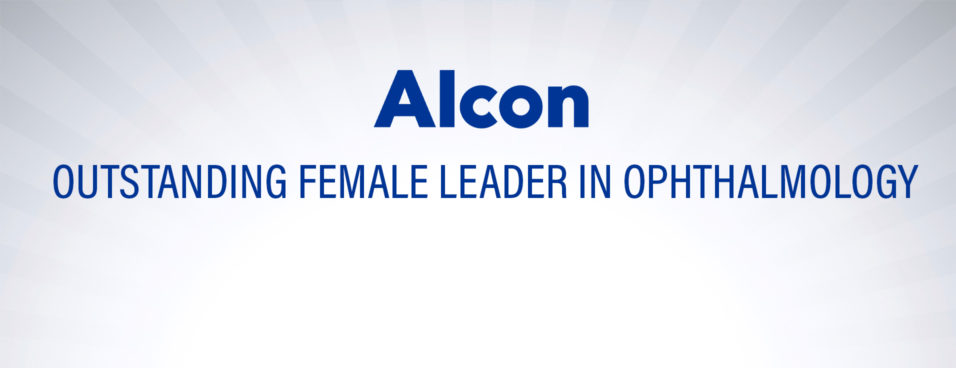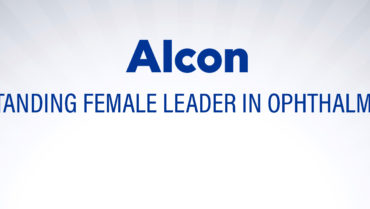
Dr. Schallhorn is an Assistant Professor of Ophthalmology at the University of California, San Francisco.
1. Please share with us your background.
I am originally from San Diego, California. I grew up surrounded by ophthalmology and medicine in general—my father is a refractive surgeon, and my mother is a retired pediatric NICU nurse. Despite this, my childhood was very relaxed. My parents never pushed me into medicine, and they took a hands-off approach to allow me to pursue my own interests. The only restriction was that I had to go to college at one of the University of California schools due to their affordability.
In high school, I swam and played water polo, but I gave up competitive sports when I started college to focus on my studies. I majored in chemical engineering at the University of California, Los Angeles, and then went to the University of California, San Diego, for graduate school in bioengineering. After my first year of graduate school, I realized that I liked working with people more than being in a lab, so I decided to go to medical school. After completing my master’s degree, I attended medical school at the University of Southern California (USC). Following some conversations with a few influential ophthalmologists (thank you, Dr. Marguerite McDonald!), I came to the conclusion that ophthalmology was the right field for me.
I attended the University of California, San Francisco (UCSF), for residency and had my first child, Penelope, during my third year. Having children can come with surprises, and we got a big one when she was diagnosed with cystic fibrosis soon after birth. Experiencing her illness and our ongoing interactions with the medical system has greatly influenced the care I provide to my patients and my management of chronic illnesses. Fortunately, Penelope has done well with her illness thus far and is a happy and active first grader.
Following residency, I completed a fellowship in uveitis at the F.I. Proctor Foundation at UCSF and a fellowship in cornea and refractive surgery at the Casey Eye Institute at Oregon Health & Science University. I had my second child, Walter, during my first year in practice as an attending at USC. After 1 year on faculty at USC, UCSF hired me back onto faculty in cornea and as the Associate Residency Program Director. My third child, Callista, was born in December 2018, and life has never been busier.
2. What is the focus of your current research?
My research focuses on the cornea/anterior segment. I am very interested in anterior segment imaging and its potential to improve and optimize disease diagnosis and refractive outcomes. I am also currently studying refractive and cataract surgery outcomes using large databases. Additionally, I am interested in ocular surface disease and the ocular surface/lid microbiome.
3. What has your experience been collaborating with industry?
Industry collaborations are incredibly powerful. Currently, I am collaborating with Carl Zeiss Meditec on anterior segment OCT projects. Having access to the newest technology and shaping where that technology goes is exhilarating.
4. In your opinion, how is the role of women in ophthalmology evolving?
Medical schools and residencies are now 50% (or greater) female, and, as such, we are seeing a shift toward greater representation of women in ophthalmology. Along with that, we are seeing more women assume leadership roles in the national societies (Bonnie Henderson, MD, as the first female president of ASCRS, has been a huge influence), head up large NIH-funded trials, and speak from the podium. That being said, it is still notable to have women in these leadership positions. I look forward to the day when it is completely unexceptional and expected for women to be in these roles.
5. What, if any, hurdles do you feel women in health care still face?
We are fortunate that most biases against women in ophthalmology and medicine in general have been dispelled. It is now widely known that, as physicians and surgeons, women perform equally as well as men. However, there are still several hurdles women face at all stages of training. The majority of these surround childbearing issues but are not limited to them. For residents specifically, the Accreditation Council for Graduate Medical Education does not have a comprehensive maternity leave policy in place, and existing policies vary widely between residency programs. I had my first child as a third-year resident and was lucky that my program gave me 8 weeks off. However, at the same time, my oculoplastics fellow was given only 2 weeks off after the birth of her child. We need comprehensive and fair guidelines for maternity leave to protect our trainees.
The outlook for childbearing after training is also widely variable. There is a well-founded fear among young female physicians about taking time off for childrearing. I know several hard-working young female ophthalmologists who have put off having children for fear of appearing not committed when they join a practice or who have deliberately taken jobs without ownership potential for this reason. This hurts women in two ways. Delaying having children can result in loss of fertility and emotional and financial heartache from fertility treatments. Not receiving partnership offers or deliberately seeking employment-only positions can limit the earnings potential of women, rendering us less financially influential than men.
The biggest struggle I have experienced (and am still experiencing) has come with being a mother and a practicing physician. Health care has difficulty making space for mothers in medicine, as the medical system expects physicians to be fully available 100% of the time. Although this may have been possible for families in an age when one parent worked and the other stayed at home, today the majority of female physicians have working spouses. The task of managing a family and a busy clinical practice—not to mention the research and educational responsibilities in an academic practice—often feels overwhelming. On top of that, there is the very real threat of penalties to your career if you step back or are not entirely engaged.
Female physicians are universally career-driven and often accustomed to excelling at everything they do. Becoming a mother is oftentimes a conflicting experience because many women, myself included, feel like they are no longer able to excel at everything. I often feel like I am failing at both being a doctor and a mother. Medicine, and society in general, needs a better solution to childrearing that does not result in potential career penalization and high stress levels.
Other types of hurdles exist as well. At UCSF, where I practice, and at institutions across the country, women perform more administrative and educational work than men, which is not rewarded equally in institutional performance reviews. The majority of chairpersons and full professors at US academic institutions are men, and the majority of podium speakers are men as well. On top of this, some people are unable to even acknowledge that this is an issue. Just this past ASCRS, Zeiss hosted a Women’s Power Hour featuring some awesome female physicians in an event targeted toward women, and the backlash from naysayers was loud. We have come a long way, but we still have far to go.
6. What advice can you offer to young female ophthalmologists who are still in training or just beginning their careers?
First, be organized. Being able to do everything you want requires good planning and time management. This becomes even more true when you have children. Second, if you want children, plan for them and go out and do it. Having my first child during residency was one of the best things I have done. Third, seek out support and community. If something seems hard to you, it has likely been difficult for other people as well. Getting perspective and advice can make a big problem seem small. We should support each other during good times and bad.
7. Can you propose a unique or creative idea that may help women in ophthalmic practices?
Use amplification. Historically, women’s ideas have been more likely to be overlooked than men’s because women aren’t loud about promoting them. If one of your female colleagues has a good idea, amplify it by stating it again or calling attention to it during meetings or in emails.
PUBLISHED WORKS
1. Schallhorn JM, Pelouskova M, Oldenburg C, Teenan D, Hannan SJ, Schallhorn SC. Effect of gender and procedure on patient-reported dry eye symptoms after laser vision correction. J Refract Surg. 2019;35(3):161-168.
2. Lee MD, Wu F, Schallhorn JM. Successful treatment of epithelial ingrowth with intravitreal methotrexate. Ophthalmology. 2019;126(1):48.
3. Rao NA, Schallhorn JM, Rodgers D. Posterior Uveitis: Advances in Imaging and Treatment. Switzerland AG: Springer; 2019.
4. Schallhorn JM, Randleman JB, Stulting RD. Corneal ectasia. In: Alio J, Azar D, eds. Management of Complications in Refractive Surgery. 2nd ed. New York, NY: Springer; 2018: 123-132.
5. Moussa K, Shantha J, Schallhorn JM. Blurry vision and eye pain after pterygium surgery. JAMA Ophthalmol. 2018;136(7):827-828.
6. Kang JM, Padmanabhan SP, Schallhorn J, Parikh N, Ramanathan S. Improved utilization of operating room time for trainee cataract surgery in a public hospital setting. J Cataract Refract Surg. 2018;44(2):186-189.
7. Peng MY, Hannan S, Teenan D, Schallhorn SJ, Schallhorn JM. Monovision LASIK in emmetropic presbyopic patients. Clin Ophthalmol. 2018;12:1665-1671.
8. Schallhorn JM, Niemeyer KM, Browne EN, Chhetri P, Acharya NR. Difluprednate for the treatment of uveitic cystoid macular edema. Am J Ophthalmol. 2018;191:14-22.
9. Hsia YC, Naseri A, Schallhorn JM. A painful red eye. JAMA Ophthalmol. 2018;136(3):299-300.
10. Lopes BT, Ramos IC, Salomão MQ, et al. Enhanced tomographic assessment to detect corneal ectasia based on artificial intelligence. Am J Ophthalmol. 2018;195:223-232.
11. Schallhorn SC, Hannan SJ, Teenan D, Pelouskova M, Schallhorn JM. Informed consent in refractive surgery: in-person vs telemedicine approach. Clin Ophthalmol. 2018;12:2459-2470.
12. Li L, Schallhorn JM, Ma J, Cui T, Wang Y. Energy setting and visual outcomes in SMILE: a retrospective cohort study. J Refract Surg. 2018;34(1):11-16.
13. Austin A, Schallhorn J, Geske M, Mannis M, Lietman T, Rose-Nussbaumer J. Empirical treatment of bacterial keratitis: an international survey of corneal specialists. BMJ Open Ophthalmol. 2017;2.
14. Schallhorn JM, Tang M, Li Y, Louie DJ, Chamberlain W, Huang D. Distinguishing between contact lens warpage and ectasia: Usefulness of optical coherence tomography epithelial thickness mapping. J Cataract Refract Surg. 2017;43(1):60-66.
15. Li L, Schallhorn JM, Ma J, Zhang L, Dou R, Wang Y. Risk factors for opaque bubble layer in small incision lenticule extraction (SMILE). J Refract Surg. 2017;33(11):759-764.
16. Schallhorn JM, Schallhorn SC, Hettinger K, Hannan S. Infectious keratitis after laser vision correction: Incidence and risk factors. J Cataract Refract Surg. 2017;43(4):473-479.
17. Schallhorn SC, Teenan D, Venter JA, et al. Monovision LASIK versus presbyopia-correcting IOLs: comparison of clinical and patient-reported outcomes. J Refract Surg. 2017;33(11):749-758.
18. Schallhorn JM, Ciralsky JB, Yeu E. Resident and young physician experience with complex cataract surgery and new cataract and refractive technology: results of the ASCRS 2016 Young Eye Surgeons survey. J Cataract Refract Surg. 2017;43(5):687-694.
19. Schallhorn CS, Schallhorn JM, Hannan S, Schallhorn SC. Effectiveness of an eyelid thermal pulsation procedure to treat recalcitrant dry eye symptoms after laser vision correction. J Refract Surg. 2017;33(1):30-36.
20. Schallhorn SC, Schallhorn JM, Pelouskova M, et al. Refractive lens exchange in younger and older presbyopes: comparison of complication rates, 3 months clinical and patient-reported outcomes. Clin Ophthalmol. 2017;11:1569-1581.
21. Schallhorn JM, Schallhorn SC, Hettinger KA, et al. Outcomes and complications of excimer laser surgery in patients with collagen vascular and other immune-mediated inflammatory diseases. J Cataract Refract Surg. 2016;42(12):1742-1752.
22. Tang M, Li Y, Chamberlain W, Louie DJ, Schallhorn JM, Huang D. Differentiating keratoconus and corneal warpage by analyzing focal change patterns in corneal topography, pachymetry, and epithelial thickness maps. Invest Ophthalmol Vis Sci. 2016;57(9):544-549.
23. Schallhorn SC, Hannan SJ, Teenan D, Schallhorn JM. Role of the treating surgeon in the consent process for elective refractive surgery. Clin Ophthalmol. 2016;10:2391-2402.
24. Schallhorn SC, Venter JA, Teenan D, et al. Patient-reported outcomes 5 years after laser in situ keratomileusis. J Cataract Refract Surg. 2016;42(6):879-889.
25. Schallhorn JM, Holiman JD, Stoeger CG, Chamberlain W. Quantification and patterns of endothelial cell loss due to eye bank preparation and injector method in Descemet membrane endothelial keratoplasty tissues. Cornea. 2016;35(3):377-382.
26. Schallhorn SC, Venter JA, Teenan D, et al. Outcomes of excimer laser enhancements in pseudophakic patients with multifocal intraocular lens. Clin Ophthalmol. 2016;10:765-776.
27. Schallhorn JM, Schallhorn SC, Ou Y. Factors that influence intraocular pressure changes after myopic and hyperopic LASIK and photorefractive keratectomy: a large population study. Ophthalmology. 2015;122(3):471-479.
28. Schallhorn, JM Rose-Nussbaumer, J. Current concepts in the management of unique post-keratoplasty infections. Curr Ophthalmol Rep. 2015;3(3):184-191.
29. Schallhorn J, Haug SJ, Yoon MK, Porco T, Seiff SR, McCulley TJ. A national survey of practice patterns: temporal artery biopsy. Ophthalmology. 2013;120(9):1930-1934.
30. Schallhorn JM, Gonalez J. Ocular toxoplasmosis. JAAPOS. 2013;17(5):454-455.
31. Schallhorn JM, Tang M, Li Y, Song JC, Huang D. Optical coherence tomography of clear corneal incisions for cataract surgery. J Cataract Refract Surg. 2008;34(9):1561-1565.
32. Lee M, Lloyd P, Zhang X, et al. Shapes of antibody binding sites: qualitative and quantitative analyses based on a geomorphic classification scheme. J Org Chem. 2006;71(14):5082-5092.
PROFESSIONAL SOCIETY MEMBERSHIPS
- Alpha Omega Honor Society | 2008 to Present
- Association for Research in Vision and Ophthalmology (ARVO) | 2008 to Present
- American Society of Cataract and Refractive Surgery (ASCRS) | 2009 to Present
- Fellow, American Academy of Ophthalmology (AAO)2009 to Present
- International Society of Refractive Surgery (ISRS)2010 to Present
- Ophthalmic World Leaders (OWL) | 2010 to Present
- American Uveitis Society (AUS) | 2013 to Present
- Cornea Society | 2014 to Present
HONORS & AWARDS
- Dean’s List, University of Southern California Keck School of Medicine | 2005
- Association of Pathology Chairs Award, University of Southern California Keck School of Medicine | 2009
- Merck Award, University of Southern California Keck School of Medicine | 2009
- Resident’s Day Research Award, Hungtinton Memorial Hospital, Pasadena | 2010
- Langer Award, UCSF Department of Ophthalmology | 2013
- Best Paper in Session, Glaucoma and Minimally Invasive Surgery Devices, ASCRS Annual Meeting | 2013
- Super Doctor Rising, Los Angeles Magazine | 2016
- Top Doctor, Pasadena Magazine | 2016
- Kimura Award, UCSF Department of Ophthalmology | 2017
- School of Medicine Travel Award for Childcare, UCSF | 2017
- Muriel Steele Society Honor Roll, UCSF Department of Surgery | 2019


